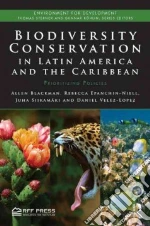 Libri di Maki Anie su Unilibro.it) Libri di Maki Anie su Unilibro.it)
|
|
2024 |
 Title :
Marinella. La grandine viene dal cielo, i pop corn li ho fatti io
Title :
Marinella. La grandine viene dal cielo, i pop corn li ho fatti ioAuthor: Anie Maki Publisher: Lotta Books € 45,00
|
|
|
1918 |
 Title :
Domestic Architecture
Title :
Domestic ArchitectureAuthor: McMakin Roy, Vilades Pilar (CON), Friedman Daniel (CON) Publisher: Princeton Architectural Pr € 46,20
|
|
|
1915 |
 Title :
Without Regard to Sex, Race, or Color
Title :
Without Regard to Sex, Race, or ColorAuthor: Feiler Andrew (PHT), Mcdaniels Pellom III, James Robert E., Amaki Amalia K., Parham Loretta Publisher: Univ of Georgia Pr This gathering of sixty images, along with the essays that frame them, gives us a new way to think about the too often troubled status of historically black colleges and universities (HBCUs). The bell in the clock tower at Atlanta’s Morris Brown College bears an inscription about the ideal of educational access, that it be “without regard to sex, race, or color.” Yet most of the Morris Brown campus has lain silent for more than a decade. Established in 1881, it was all but shut down in 2002 after years of fiscal hardship were capped by a mismanagement scandal. Pride still runs high among its alumni, however, and its current leadership vows to revive the school. Meanwhile, as Andrew Feiler’s stirring photos show, Morris Brown is literally falling apart. In the spirit of those photographers who have documented the physical decline of our valued institutions—from small family farms to entire cities—Feiler points his lens at one embattled place and dares us to look away. Aiming to “open minds, trigger emotion, stimulate discussion, and, perhaps, prompt action,” his images project a new layer of meaning onto the Morris Brown story. We see classrooms, dorms, gym facilities, and other spaces no longer alive with students, faculty, and staff but rather mired in a state of uncertainty where hopes of normality’s return mutely battle a host of unwelcome alternate futures. We see how time passes without regard for academic years, regular maintenance cycles, or the other comings and goings that would ordinarily call attention to the leaks, invading animals, acts of vandalism, and other forces working to peel the paint from Morris Brown’s walls, buckle its floors, and molder its furnishings. We see garbage piling up alongside sports trophies, scientific equipment, and other vestiges of the prouder past we would rather remember. Feiler’s photos are accompanied by writings that address the college’s profound impact on one family, history and memory, the documentary and narrative powers of photography, and the place of HBCUs in American public life. Images and text combine powerfully to show us what happens when a place meant to be honored is left to its own. A Sarah Mills Hodge Fund Publication € 28,80
|
|
|
1914 |
 Title :
Biodiversity Conservation in Latin America and the Caribbean
Title :
Biodiversity Conservation in Latin America and the CaribbeanAuthor: Blackman Allen, Epanchin-niell Rebecca, Siikamäki Juha, Velez-lopez Daniel Publisher: Resources for the Future Latin America and the Caribbean (LAC) region is exceptionally biodiverse. It contains about half of the world’s remaining tropical forests, nearly one-fifth of its coastal habitats, and some of its most productive agricultural and marine areas. But agriculture, fishing and other human activities linked to rapid population and economic growth increasingly threaten that biodiversity. Moreover, poverty, weak regulatory capacity, and limited political will hamper conservation. Given this dilemma, it is critically important to design conservation strategies on the basis of the best available information about both biodiversity and the track records of the various policies that have been used to protect it. This rigorously researched book has three key aims. It describes the status of biodiversity in LAC, the main threats to this biodiversity, and the drivers of these threats. It identifies the main policies being used to conserve biodiversity and assesses their effectiveness and potential for further implementation. It proposes five specific lines of practical action for conserving LAC biodiversity, based on: green agriculture; strengthening terrestrial protected areas and co-management; improving environmental governance; strengthening coastal and marine resource management; and improving biodiversity data and policy evaluation. € 112,20
|